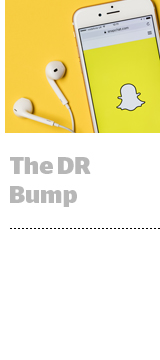
Snap is seeing a nice bump from performance advertisers.
The platform said Tuesday that its revenues from direct-response buyers doubled over the past year, although it did not break out a figure. Total revenue grew 39% year over year to $320 million, beating analyst expectations of $307 million.
Snap’s success with performance advertisers is driven by its self-serve platform, Snap Ads Manager, which is “nearly at feature parity” with industry leaders for targeting and optimization, Snap chief business officer Jeremi Gorman said during the company’s Q1 earnings call. Direct-response buyers also like Snap’s new products, such as goal-based bidding.
Even brand advertisers are now buying on the platform programmatically, as Snap has made all of its ad products, including AR lenses, available in Snap Ads Manager.
“Advertisers can now buy our core product based on reach and frequency, which allows brand marketers to use self-service tools with the transparency and predictability of fixed pricing,” Gorman said.
But Snap is still seeing pressure on pricing in its programmatic auction. While total impressions were up 155% in Q1, prices were lower 42% year over year and 22% sequentially, driven by “an increase in available supply,” said Snap interim CFO Lara Sweet.
Average revenue per user in Q1 was $1.68, down 19% sequentially.
“Our self-serve tools are less than two years old, so demand is still early,” she said. “We continue to see meaningful growth.”
The company is also still facing headwinds in scaling its creative formats, which are specific to the platform and resource-intensive for advertisers and agencies to create.
“The No. 1 hurdle is that our ad formats are different than you would traditionally see on desktop, TV and digital,” Gorman said. “As these units become more common outside of Snap, we expect that to become less of a hurdle for us.”
Snap didn’t have much to say about its forthcoming audience network, except that it’s just getting started with select partners and the company does not expect it to impact revenue in 2019.
User bump
Snap added 4 million new daily active users this quarter, a 2% increase to 190 million. The company reaches 75% of 13- to 34-year-olds in the United States, and they average more than 30 minutes on the platform per day.
“As we see increased engagement, we can show more ads to the Snapchat community without impacting their experiences,” Gorman said.
Snap has also completed the reorganization of its US sales team to work more closely with enterprise and emerging brands and acquire new customers. It’s continuing to expand the new model internationally.
“Our sales team used to have a list of 100 advertisers they were calling,” Gorman said. “We shrunk that list in enterprise, allowing them to go deeper with advertisers.”
And Snap is continuing to redesign the Snapchat app for Android, where it historically offered a poor user experience.
“For us, this is the price of admission to international markets,” said Spiegel said.
This post was syndicated from Ad Exchanger.


More Stories
Fanta’s Famous Jingle Is Back With New ‘Wanta Fanta’ Remix
GSTV Wants To Turn Gas Stations Into A Video Ad Marketplace
Chicken cake marks ten years for Bostock Brothers